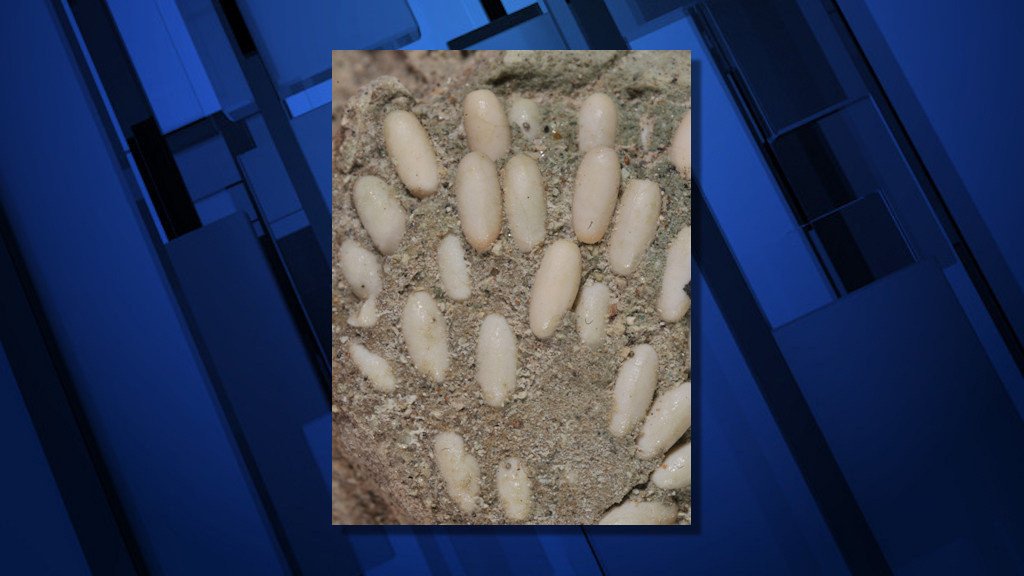First-ever, 29 million-year-old fossil grasshopper eggs, nest discovered in John Day Fossil Beds

Originally thought to be ant eggs; micro-CT scans proved otherwise
MITCHELL, Ore. (KTVZ) -- The first-ever described fossil grasshopper eggs and egg pod on Earth has been found in the Sheep Rock Unit of John Day Fossil Beds National Monument, the National Park Service announced Friday.
As reported in the journal Parks Stewardship Forum, Jaemin Lee (of the University of California, Berkeley), Dr. Nicholas Famoso (John Day Fossil Beds National Monument), and Angela Lin (University of Oregon) used micro-CT scans to investigate the internal structure of over 50 fossilized insect eggs and an intact egg pod from the Sheep Rock Unit.
The eggs had been previously found in isolation and were identified as ant pupae or ant eggs. The discovery of the intact nest in 2016 resulted in confirmation that these were not made by ants.
The shape of the eggs is consistent with modern grasshoppers that lay their eggs in underground nests. Never before has a fossil egg pod of grasshoppers been found and described on Earth, attesting to their rarity and the exceptional preservation of the John Day fossil beds.
The fossilized egg pod is named Subterroothecichnus radialis, while the individual eggs are named Curvellipsoentomoolithus laddi.
Both names speak to the shape and nature of the trace fossils and egg fossils, but the eggs are named posthumously after the first National Park Service superintendent of John Day Fossil Beds National Monument, Benjamin Ladd.
Ladd began the protection and resource management and science programs at the park that study and protect these specimens, which are currently only known from within National Park Service boundaries. These fossils are a testament to the National Park Service mission and the policies and programs established under Ladd’s leadership between 1975 and 1993.
The new study, “Microtomography of an enigmatic fossil egg clutch from the Oligocene John Day Formation, Oregon, USA, reveals an exquisitely preserved 29-million-year-old fossil grasshopper ootheca,” can be found online in Parks Stewardship Forum: Fossil Grasshopper Eggs